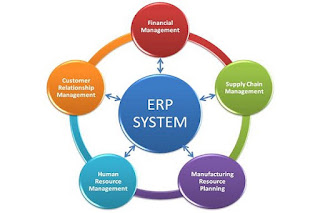Most Syntax PAAS systems are modular and contain the following components (modules):
Finance management and accounting - related to the general planning and management of the company, incl. reporting and financial statements - turnover sheet, general ledger, account diary, chronological inventory of operations, balance sheet, income statement, cash flow statement, equity statement and attachments.
Supply and Liability Management - covers the planning and ordering of raw materials and repayments to suppliers.
Warehouse management - covers the planning and management of inventory.
Sales, Marketing and Receivables Management - covers the planning and management of customer sales, manages consumer demand by conducting marketing campaigns that anticipate market needs as well as tracking customer receivables.
Production management - covers the planning and management of the production cycle, such as - production capacities of the planned products, cost standards, production costs, etc.
Personnel management - includes the planning and management of human resources, such as pay, specializations and retraining, vacations and hospital, etc.
Administration - set global module settings, backup and restore information in the database (backup), manage user accounts and user groups.
Depending on the specific activity of the respective company, the following two systems may be included in ERP systems:
Asset Management System – EAM
Large companies that have very long-lived depreciable assets (FTAs), such as buildings, machines, computer equipment, vehicles, etc., need an Enterprise Asset Management (EAM) system that helps manage such key processes as are - capital construction and technical exploitation of the assets, leasing of objects, accrual of depreciation of tangible fixed assets, taxation, etc.
Thanks to the EAM, it is possible to keep the company's fixed assets in maximum readiness, reduce the cost of repairs and hence the downtime. For example, a single register of all company real estate can be created and the effectiveness of its use monitored on this basis.
The main users of EAM applications are the companies in the mechanical engineering, metallurgy, chemistry, energy and utility sectors, as well as the financial sector companies - banks and insurance companies. They, on the one hand, have a territorially distributed structure of business units and, on the other, control a significant number of buildings. For them, effective real estate and human resource management (HRM) is a priority, as they form the main cost items, so the combination of EAM and HRM is in most cases featured in their information architecture.
Production Optimization System – APS
The Advanced Planning and Scheduling (APS) production optimization system can optimize production schedules, taking into account all kinds of constraints - from equipment setup times to staff scheduling. This class of systems are capable of forecasting fluctuations in production capacity utilization and reducing inventory levels following the "just in time" concept, as well as providing optimum response in unforeseen circumstances such as equipment damage or overtime ordering.

No comments:
Post a Comment